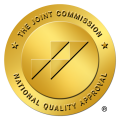Telehealth Services for Addiction Treatment Facilities
Telehealth services, particularly videoconferencing with therapists and doctors, may be the next big thing in addiction treatment.
What is Telehealth?
It is defined as the use of electronic devices, communication, and information to support healthcare, public health, health administration, and health-related education from a distance. Telehealth services include things like online therapy apps and video chats, virtual doctor’s appointments, and mood-monitoring dashboards for risk monitoring, among other things.
In terms of telehealth and telemedicine treatments, doctors may be able to remotely treat and diagnose the following ailments:
- Allergies
- Arthritic pain
- Insect bites
- Colds and flu
- Bronchitis
- Rashes
- Respiratory infections
- UTIs
- Sports injuries
- Conjunctivitis
Telehealth services can vary widely depending on the specialty; a gynecologist may utilize video conferencing to discuss birth control options with a patient, while a surgeon may use it to check up on patients post-op.
The COVID-19 pandemic popularized telemedicine and telehealth services. In order to slow the spread of the virus and protect as many people as possible, many doctors encourage patients to opt for telehealth appointments over traditional in-person appointments.
COVID-19 and Telehealth Services
People struggling with their mental health during the pandemic also have safe access to mental healthcare through online therapy and counseling apps. During the pandemic, 4 in 10 adults report experiencing anxiety, compared to 1 in 10 adults in pre-pandemic, according to KFF.1 Anxiety isn’t the only negative effect happening during the pandemic: studies show that “many adults are reporting specific negative impacts on their mental health and well-being, such as difficulty sleeping (36%) or eating (32%), increases in alcohol consumption or substance use (12%), and worsening chronic conditions (12%), due to worry and stress over the coronavirus.”2
These recent widespread health issues make convenient access to therapy and doctors via telehealth services timelier and more important than ever.
How Do Telehealth Services Work?
Live video conferencing is the most common telehealth service. During a video conference, patients will “meet” with their doctor virtually, via Skype, Zoom, or another video conferencing service. Many doctors will send patients the link directly, and patients simply click the link at the time of their appointment and wait for their doctor to join the online meeting. Like a traditional, in-person appointment, the patient and healthcare professional will discuss the symptoms the patient is experiencing and work out a treatment plan. Doctors may also prescribe medicine if necessary.
Some other telehealth services include:
- Asynchronous video, or Store-and-Forward: the electronic delivery of a patient’s medical history, often used to deliver information from rural areas to specialists.
- Remote patient monitoring is used to collect data from patients in one area, then sent to a health professional in another area.
- Mobile health, or the use of smart devices and health-centered apps that support healthcare, from monitoring water intake to blood sugar levels.
Other Measures for Telehealth Addiction Treatment

Telehealth services can be useful for addiction treatment, as the remote aspect makes treatment convenient and more easily available. Remote patient monitoring can be achieved in the form of wearable devices that monitor the patient’s vital signs, as well as other bodily symptoms that may indicate potential relapse. These wearable devices gather data from the patient that is sent directly to the patient’s doctor, so there is a direct and instant line of communication that emphasizes the patient’s safety.3
Telehealth Therapy
Those struggling to maintain sobriety may find relief in telehealth therapy. Therapy video conferencing or therapy apps allow people to connect with licensed professionals in sessions that mimic in-person therapy sessions. Some apps also allow therapy via online chat or text, which may be more convenient for busy people or those who need immediate counseling.
Online dashboards created by medical professionals can help patients by offering a “check-in” service that allows patients and doctors to monitor the moods and feelings of patients. This method, paired with other telemedicine resources, can help someone maintain sobriety.
The Benefits of Telehealth Video Conferencing
Telemedicine and video conferencing provide an alternative to in-person healthcare that is safer and more convenient for patients and doctors. Telehealth offers the benefit of access to caregivers around the clock and caregivers in any location. This aspect is particularly helpful for people with limited mobility or limited transportation to doctor’s offices. Some other benefits of telehealth services include:
- Promotes social distancing, reducing viral spread during the pandemic, and is safer for both patients and health professionals.
- Allows round-the-clock monitoring of patients, making it useful for addiction treatment or at-risk monitoring.
- Provides coaching or support for patients managing chronic health conditions and prevents excessive doctor’s visits.4
- Helps with the shortage of mental health professionals, since online services are available to more people.
The Negatives of Telehealth Video Conferencing
Although there are several benefits to telehealth services, there are some drawbacks as well. It is important to acknowledge that not everyone has access to telehealth services, as video conferencing or telehealth calls require a phone, computer, or tablet. In addition, older people may be hesitant to try telehealth services if they are unfamiliar with current technology. Some people are skeptical towards telehealth because there is no in-person exam involved. Despite doctors being able to diagnose certain ailments just from an explanation of symptoms, some may not feel comfortable being treated virtually.Is Remote Addiction Treatment Effective?
Remote monitoring and other telehealth services are promising developments for addiction treatment. Remote monitoring in the form of wearable health-measuring devices is creating a significant impact in society and the research community, but there is still more to be discovered in terms of accuracy, reliability, software, and usage.5 Current remote monitoring devices are not heavily relied upon at this time for addiction treatment, but remote addiction treatment in the form of counseling is gaining traction. Overall, remote addiction treatment is a growing field and will likely gain popularity in the years to come.Resources
- https://www.kff.org/
coronavirus-covid-19/
issue-brief/the-implications-of-covid-19-for-mental-health-and-substance-use/ - https://www.kff.org
/coronavirus-covid-19/issue-brief/the-implications-of-covid-19-for-mental-health-and-substance-use/ - https://www.sigmundsoftware.com/blog/wearable-technology-in-behavioral-health-and-addiction-treatment/
- https://www.cdc.gov/coronavirus/2019-ncov/hcp/telehealth.html
- https://link.springer.com/content/pdf/10.1007/s12652-017-0598-x.pdf




